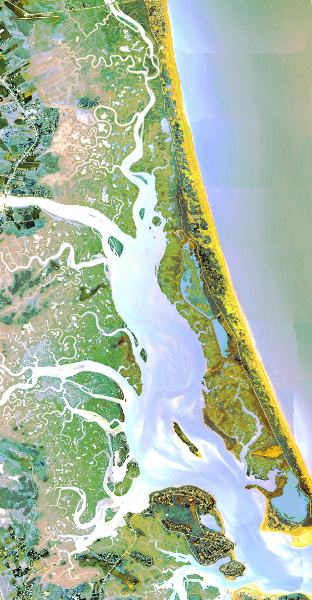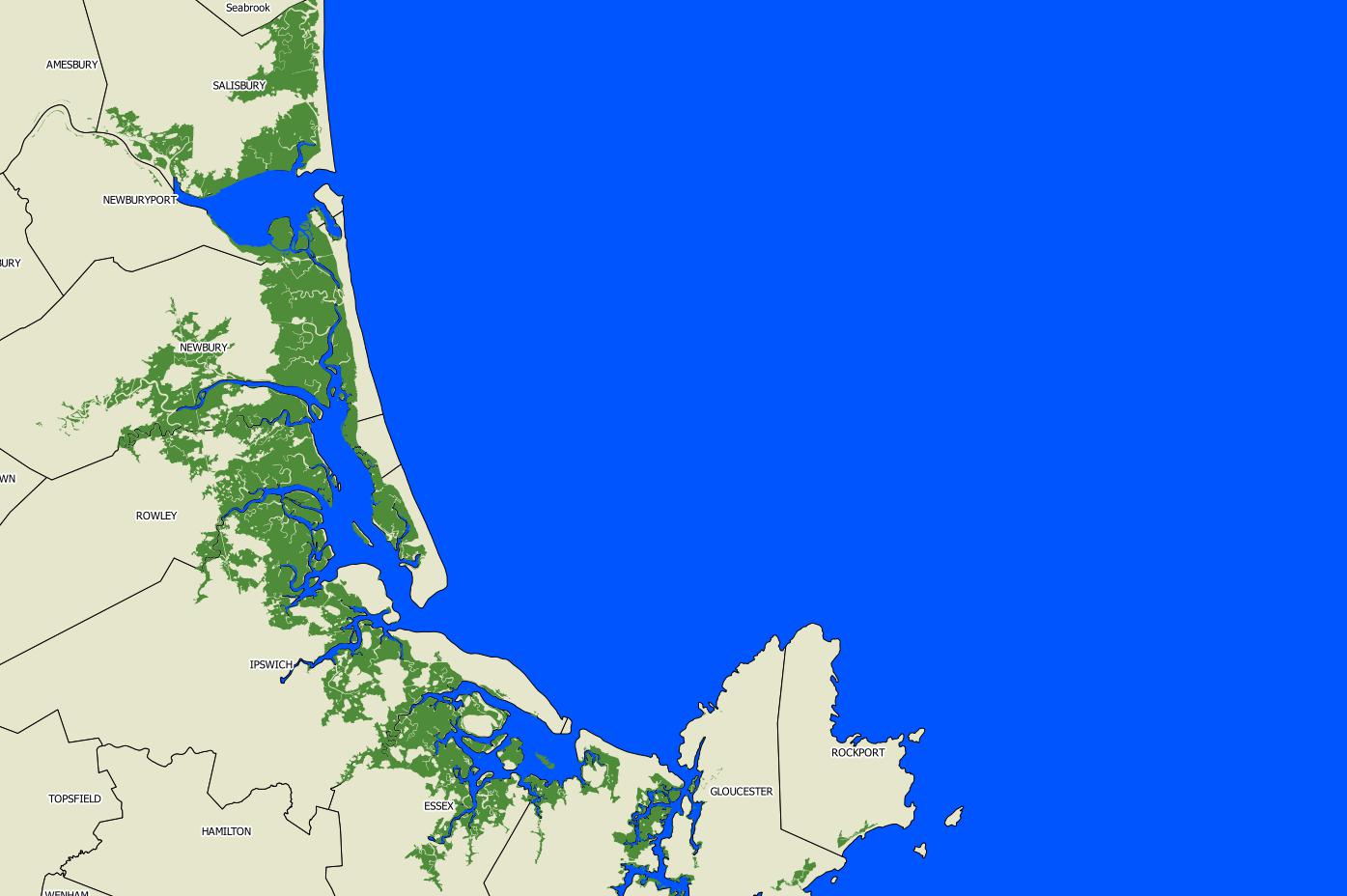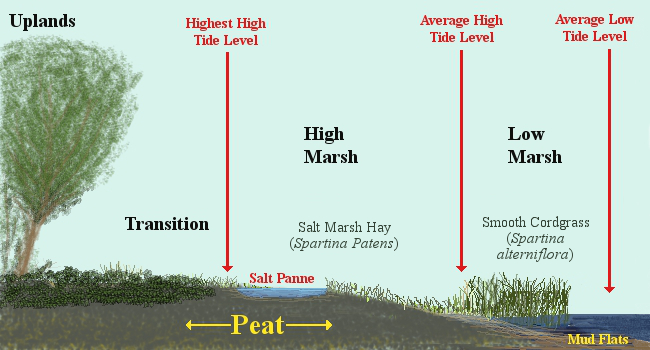Overview
The North Shore is home to the largest continuous salt marsh in New England. The Great Marsh runs from Cape Ann into New Hampshire and covers over 20,000 acres. Further South, the 600 acre Rumney Marsh Reservation fringes the mouth of the Saugus River on the border of Revere and Saugus.
Salt Marshes form on parts of the coast that are protected from the full force of the waves by barrier islands and estuaries. Much of the Great Marsh lies behind the Plum Island and Castle Island / Crane Beach barrier islands. Rumney Marsh is protected from wave action by Revere Beach.
These are unique communities made up of plants and animals that are able to tolerate the salty ocean water that floods the marsh daily with the incoming tide. The two most important species that are the basis for the entire community are Smooth Cordgrass (Spartina alterniflora) and Salt Marsh Hay (Spartina patens) which are discussed in detail below. The Marshes provide important habitat for a wide variety of species including economically valuable shellfish and a number of rare birds. Portions of the Great Marsh are internationally recognized as Important Bird Areas (IBAs).
Salt Marsh Formation
Glaciers scoured the Northern Massachusetts coast between 22,000 and 12,000 years ago, clearing away any salt marshes that previously existed. In many of the protected areas of the coast (including the shoreline behind Plum and Castle Island and in the Merrimack, Parker, Ipswich and Saugus river estuaries) mud, silt and clay sediments settled out of the water to form extensive mud flats. Twice a day at low tide, portions of these mud flats are exposed to open air. Seeds from the two grasses mentioned above, Smooth Cordgrass (Spartina alterniflora) and Salt Marsh Hay (Spartina patens) took root in the mud. Both species possess a special regulatory system to excrete excess salt through pores in their leaves. As grasses sprouted and spread asexually through underground rhizomes, the thick growth began to trap more sediments and organic matter which raises the level of the marsh. The organic matter and dead spartina grasses accumulate underneath the new growth as peat.
Salt Marsh Zonation
Smooth Cordgrass (Spartina alterniflora) is more effective at disposing of excess salt and can better tolerate having its roots submerged by the daily tides. At higher levels of the marsh which are only exposed to the highest tides, Salt Marsh Hay (Spartina patens) outcompetes Smooth Cordgrass and becomes the dominant species. This interaction with the tides creates vertical zones with a High Marsh consisting almost exclusively of Smooth Cordgrass at the ocean’s edge and a Low Marsh consisting of Salt Marsh Hay and other salt tolerant species.
 Satellite view of extensive salt marsh at Plum Island.
Satellite view of extensive salt marsh at Plum Island.


